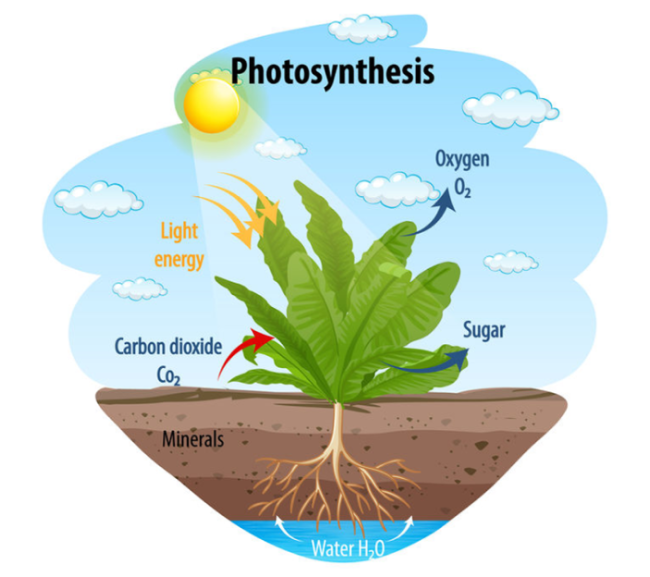Note that your final mark will not be saved in the system.
8. Photosynthesis GapFill
You must fill all the gaps before clicking ‘Check Answers!’

Photosynthesis
Plants and green algae are able to make their own food. For this reason, they are called in the food chain.
The food they make is a sugar called , and they make it from carbon dioxide and , by a chemical reaction called photosynthesis. Oxygen is a waste product of this process.
The raw materials for photosynthesis don’t contain any energy, but sugar does. The energy to make the sugar molecules comes from .
Cells in the plant leaves have special structures called . These structures have a green pigment named chlorophyll, which absorbs the light energy.
Leaves have a layer of palisade cells near the top of the leaf, where most of the photosynthesis happens. These cells are a shape and are packed closely together. Below this is a spongy layer, where the cells are loosely packed with air spaces so that gases can diffuse in and out of cells easily.
The carbon dioxide for photosynthesis comes from the air. It diffuses into the leaves through small holes in the leaf’s surface, called .
The water comes from the soil. Plants absorb it through root hair cells, and then it is transported up to the leaves in vessels made from tissue.
The glucose that is made by photosynthesis is transported all around the plant in phloem tubes.
Some of it is used in to release energy to keep the plant cells alive.
The rest is converted into other substances that make up the body of the plant, including:
- starch, for storage
- cellulose, to make cell walls
- for growth